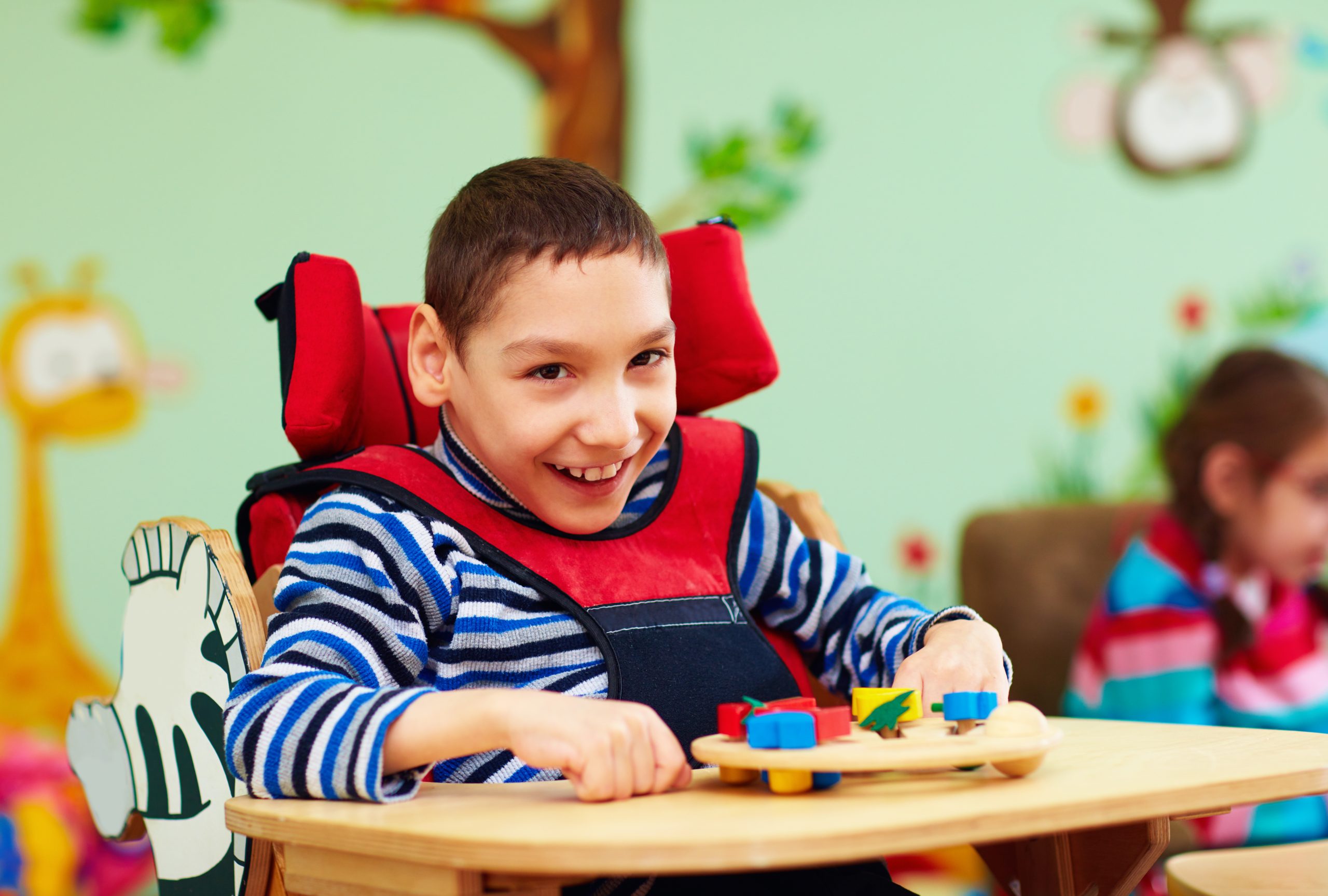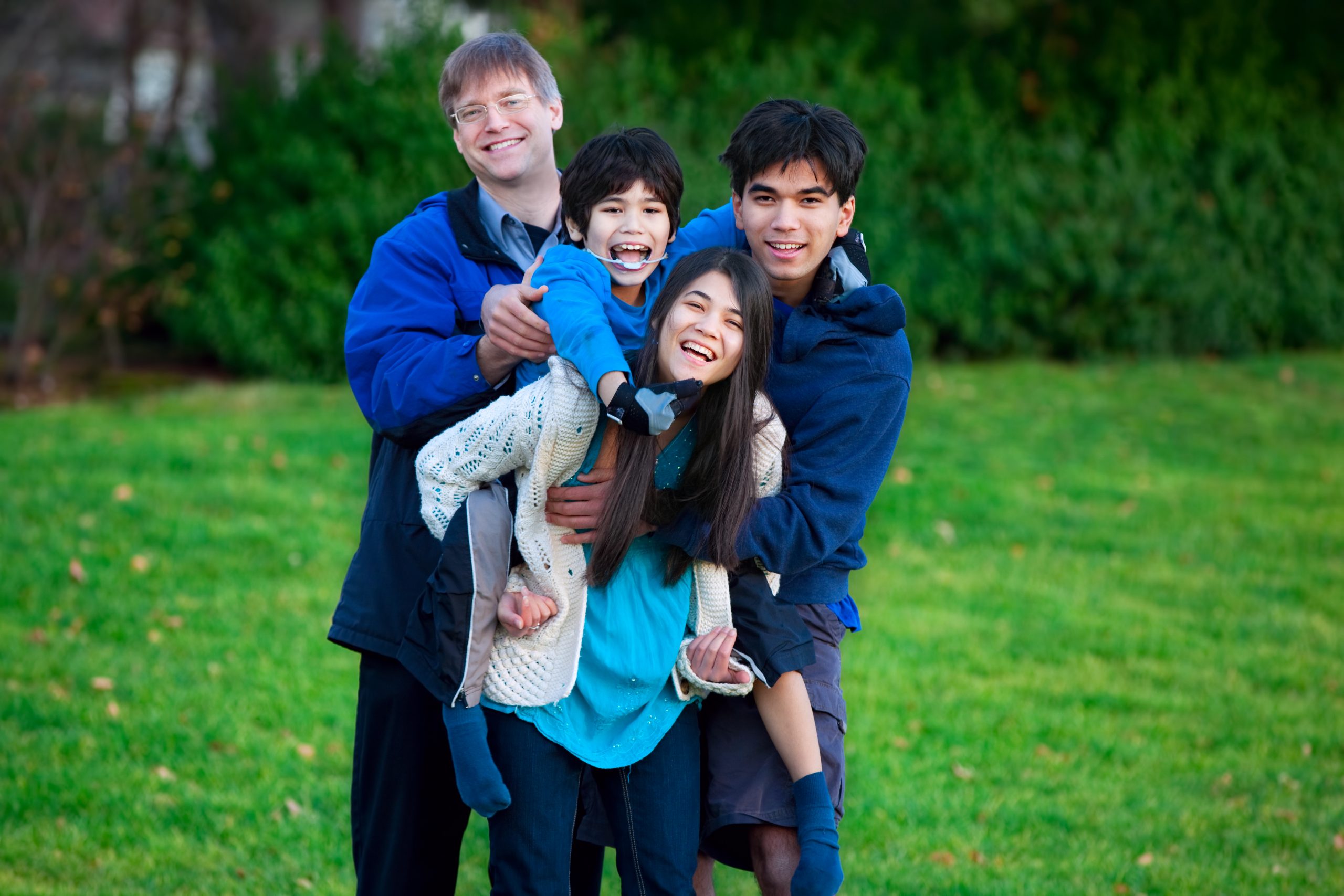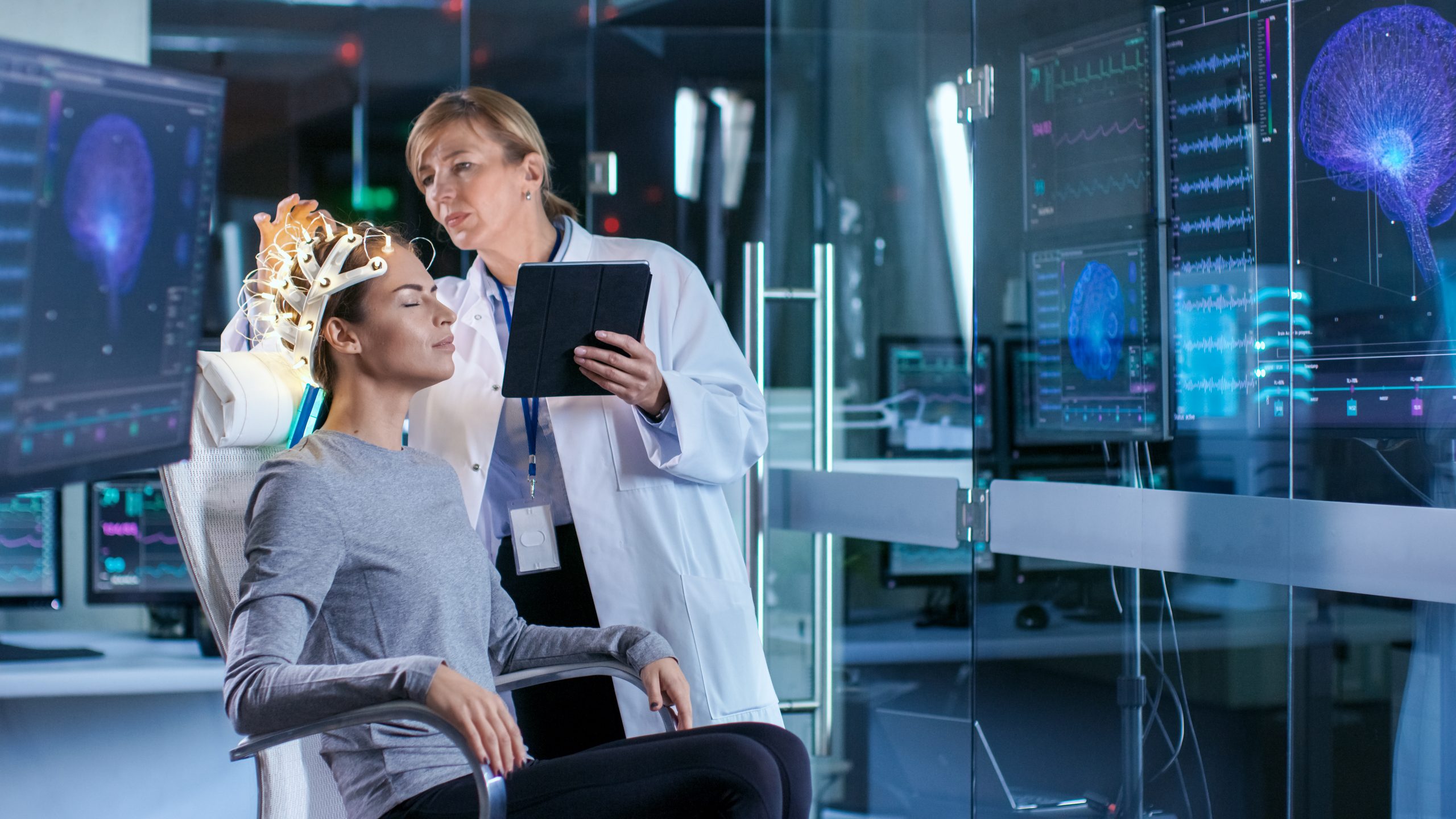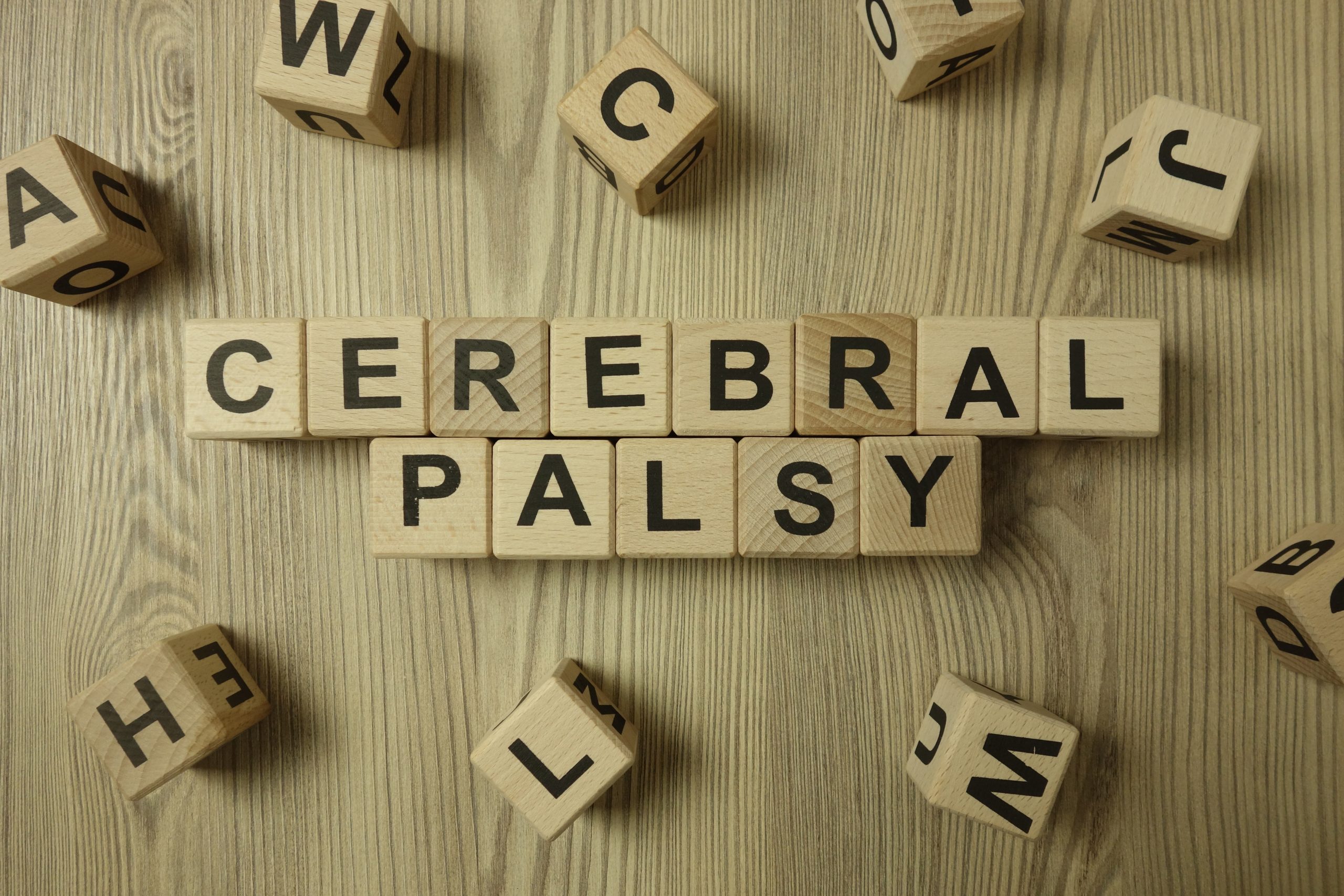Cerebral Palsy: Important Information and Useful Resources
Cerebral palsy encompasses several neurological conditions. These conditions may first occur in the early childhood years. They tend to permanently impact body movement and muscle coordination. However, they do not tend to get worse over time.
Although cerebral palsy affects muscle movement, it does not start in the muscles. Instead, it originates from abnormalities in the areas of the brain that coordinate muscle movement. Most children with cerebral palsy are born with the condition. But they may be asymptomatic until they get a few months or years older. Generally the symptoms emerge by age 3.

Some of the symptoms of cerebral palsy include:
- Ataxia: lack of muscle coordination when moving voluntarily
- Spasticity: stiff muscles and exaggerated reflexes
- Dragging one foot (or leg) when walking
- Walking on tiptoes
- Walking with a crouched (or bent-over) gait
- Walking with a scissored gait (or walking with slow small steps)
- A muscle tone that is too stiff or too floppy
A few children may have developed cerebral palsy from early brain damage. Brain infections such as bacterial meningitis or viral encephalitis are another cause. Cerebral palsy can also result from injuries. These can be sustained in a fall, a motor vehicle accident or child abuse, for example.
Some of the symptoms of cerebral palsy include:
- Ataxia: lack of muscle coordination when moving voluntarily
- Spasticity: stiff muscles and exaggerated reflexes
- Dragging one foot (or leg) when walking
- Walking on tiptoes
- Walking with a crouched (or bent-over) gait
- Walking with a scissored gait (or walking with slow small steps)
- A muscle tone that is too stiff or too floppy
A few children may have developed cerebral palsy from early brain damage. Brain infections such as bacterial meningitis or viral encephalitis are another cause. Cerebral palsy can also result from injuries. These can be sustained in a fall, a motor vehicle accident or child abuse, for example.

Treating Cerebral Palsy
There’s no cure for cerebral palsy. But treatment may often improve a child’s physical capabilities. Early diagnosis and subsequent treatment yield the best results. This is because it gives a child enough time to overcome or make adaptations. This then allows them to accommodate these developmental disabilities.
Cerebral palsy treatment may include:
- Physical and occupational therapy
- Speech therapy
- Medications to control seizures
- Medications that relieve muscle spasms and give pain relief
- Corrective surgery (to aid with anatomical functioning)
- Orthotic devices (for example leg braces)
- Rolling walkers and wheelchairs
- Communication devices (such as computers connected to voice synthesizers)


![]()
Cerebral Palsy Prognosis
The good news is that cerebral palsy does not always mean severe disabilities. Cerebral palsy symptoms differ from one person to the next in terms of their range and severity. Early use of medical treatment, therapies, surgeries and devices can significantly improve a child’s motor and communication skills.
![]()
Cerebral Palsy Prognosis
The good news is that cerebral palsy does not always mean severe disabilities. Cerebral palsy symptoms differ from one person to the next in terms of their range and severity. Early use of medical treatment, therapies, surgeries and devices can significantly improve a child’s motor and communication skills.

Accessing Healthcare
for Cerebral Palsy
Cerebral palsy is a lifelong condition that requires continued medical support. Do you believe that your child exhibits one or more cerebral palsy symptoms? If so, then please contact us for an initial assessment. Our team of expert physicians at Family Neurology is able to diagnose and provide effective medical care for your child. We are also willing to work with you, your child and your support team. We want to ensure that your child gets the best healthcare to enhance their quality of life.


Cerebral Palsy Resources
Research
Scientific cerebral palsy research is focused on exploring the influence of disruptions in early brain development. They also look into genetic defects in the brain abnormalities that result in the condition.
Researchers are also investigating the impact of traumatic events in infants’ brains. These may generate abnormal chemical reactions. As a result, they can lead to the type of brain damage that characterizes cerebral palsy. These traumatic events can include bleeding, and epileptic seizures, for example. It can also include breathing and circulation problems.
These scientists are also working to discover ways to prevent white matter disease. This is the most common factor in cerebral palsy. Other studies are also evaluating experimental and conventional treatments. This is to ensure that children with cerebral palsy are getting the best type of treatment. This will help to inform medical professionals and parents. As a result, they will be able to make the right choice of treatment plan for their children.
Organizations
United Cerebral Palsy (UCP)
This organization educates, advocates, and provides support to improve the quality of life for persons with a range of disabilities.
Pathways
Pathways is a national nonprofit. It promotes babies’ best physical development. They do this by raising awareness about the benefits of early detection and medical intervention.
March of Dimes
This organization seeks to enhance infant health by preventing birth defects and mortality. It does this through its research programs, community service, education and advocacy.
Easter Seals
An organization that gives support to children and adults with special needs, as well as their families. This includes people suffering from cerebral palsy. It also works with the National AgrAbility program. This program supports farmers, ranchers, and farm workers with disabilities.
Cerebral Palsy Resources
Research
Scientific cerebral palsy research is focused on exploring the influence of disruptions in early brain development. They also look into genetic defects in the brain abnormalities that result in the condition.
Researchers are also investigating the impact of traumatic events in infants’ brains. These may generate abnormal chemical reactions. As a result, they can lead to the type of brain damage that characterizes cerebral palsy. These traumatic events can include bleeding, and epileptic seizures, for example. It can also include breathing and circulation problems.
These scientists are also working to discover ways to prevent white matter disease. This is the most common factor in cerebral palsy. Other studies are also evaluating experimental and conventional treatments. This is to ensure that children with cerebral palsy are getting the best type of treatment. This will help to inform medical professionals and parents. As a result, they will be able to make the right choice of treatment plan for their children.
Organizations
United Cerebral Palsy (UCP)
This organization educates, advocates, and provides support to improve the quality of life for persons with a range of disabilities.
Pathways
Pathways is a national nonprofit. It promotes babies’ best physical development. They do this by raising awareness about the benefits of early detection and medical intervention.
March of Dimes
This organization seeks to enhance infant health by preventing birth defects and mortality. It does this through its research programs, community service, education and advocacy.
Easter Seals
An organization that gives support to children and adults with special needs, as well as their families. This includes people suffering from cerebral palsy. It also works with the National AgrAbility program. This program supports farmers, ranchers, and farm workers with disabilities.

Call Us to Make an Appointment
Phone: 713-589-7020
Fax: 713-999-9095
3301 Plainview St, Suite 8
Pasadena, Texas 77504

